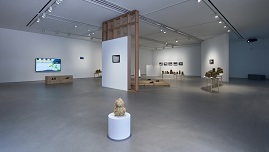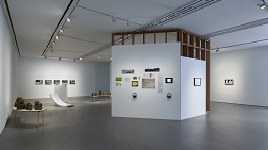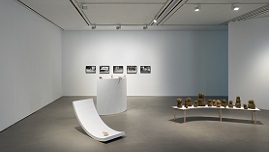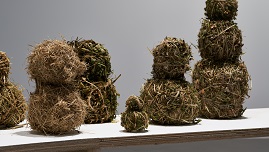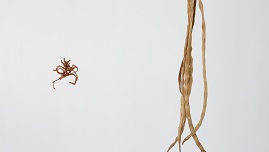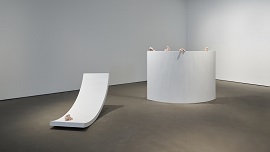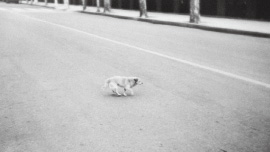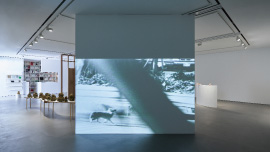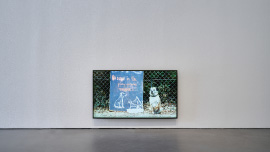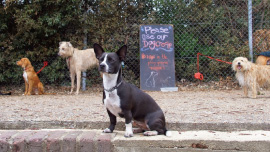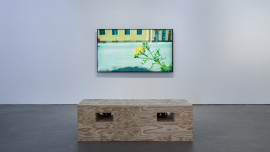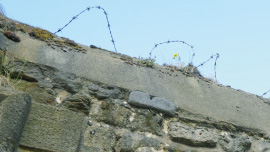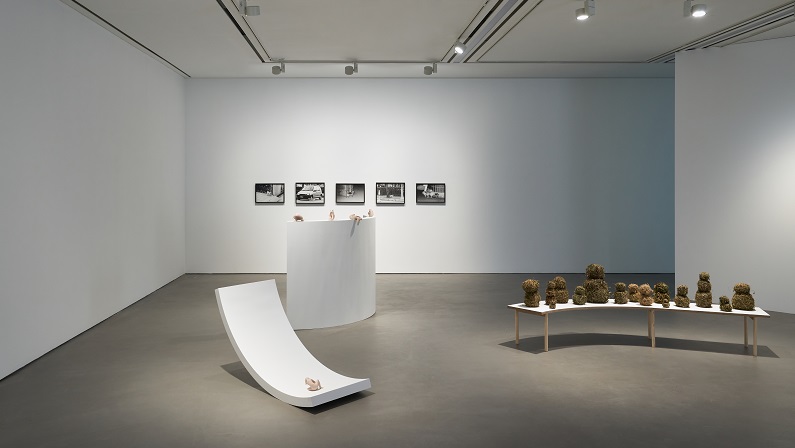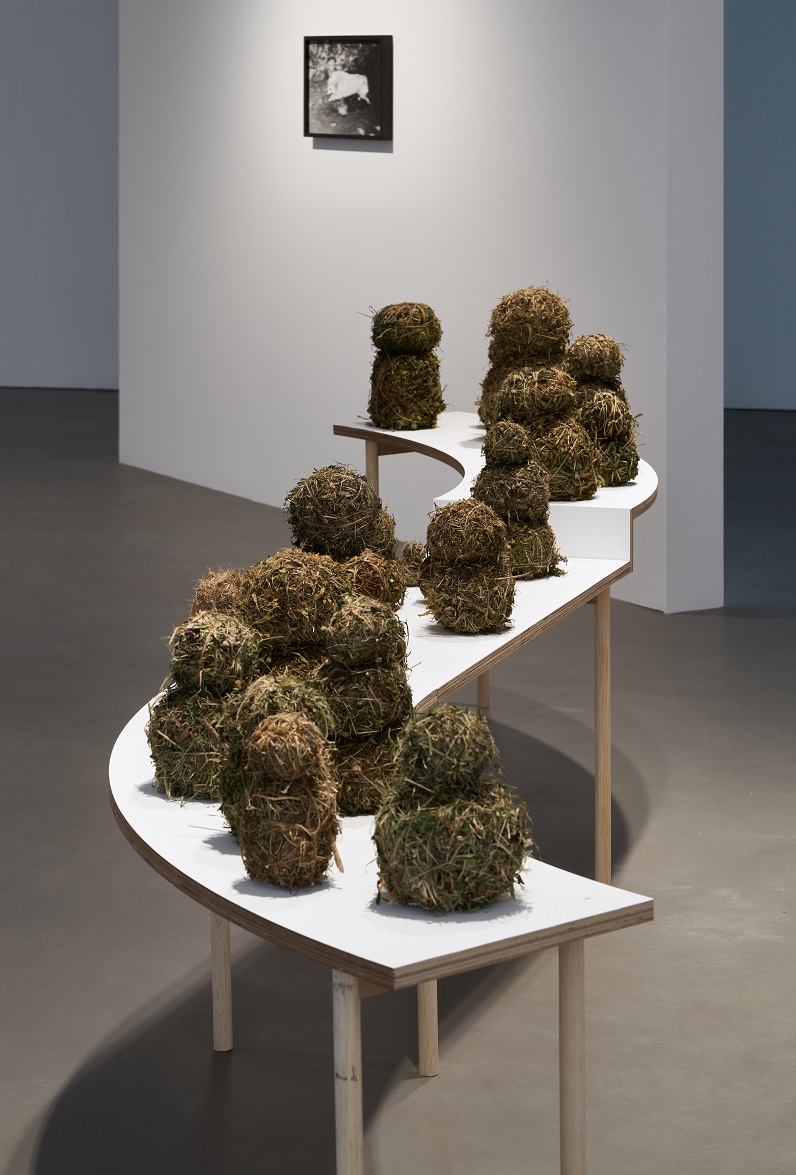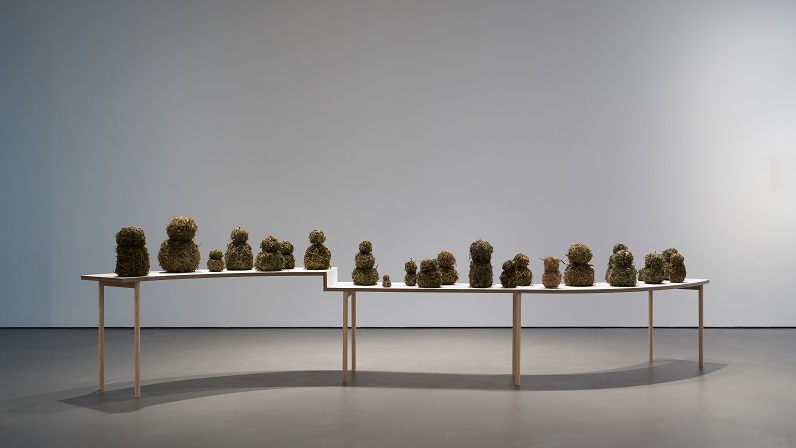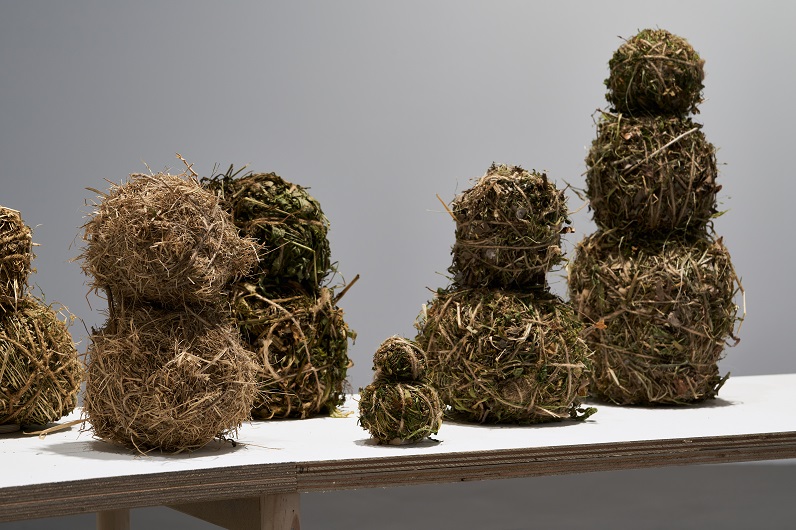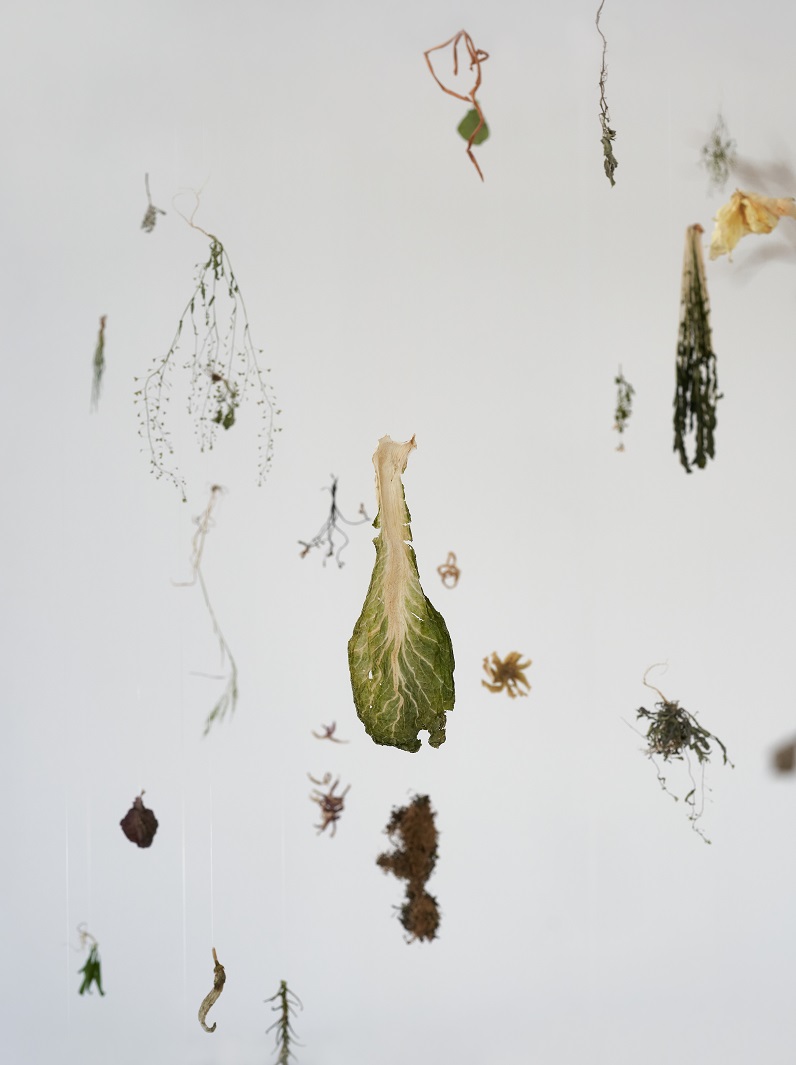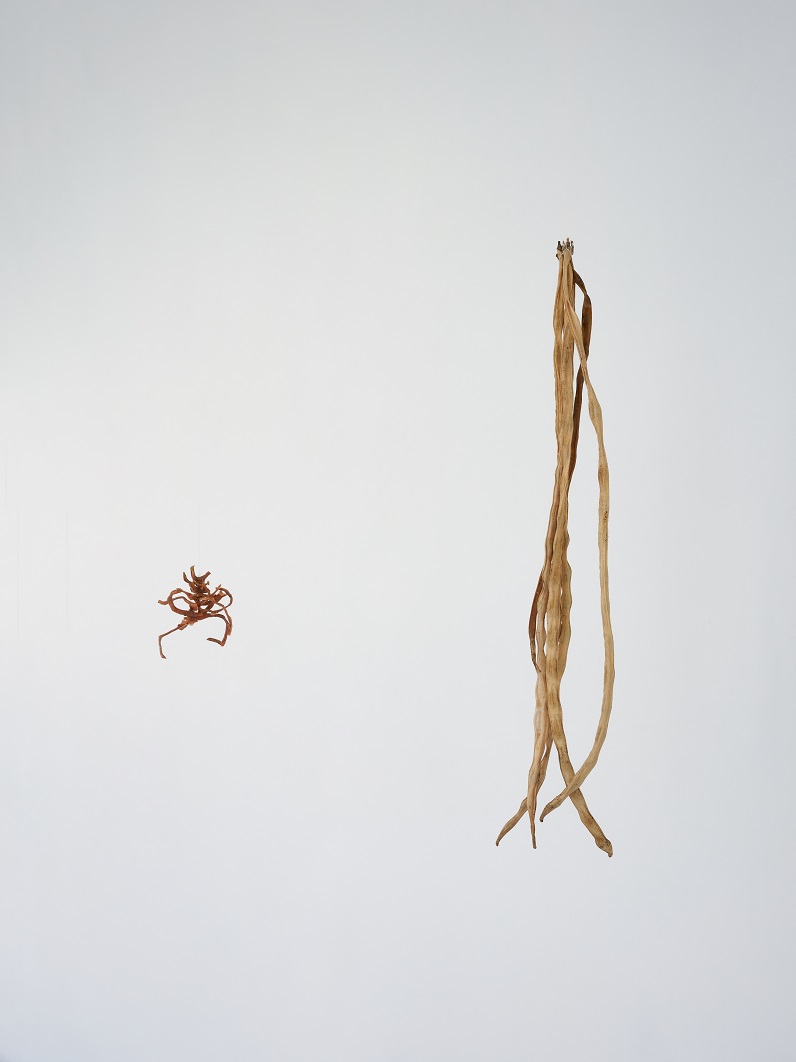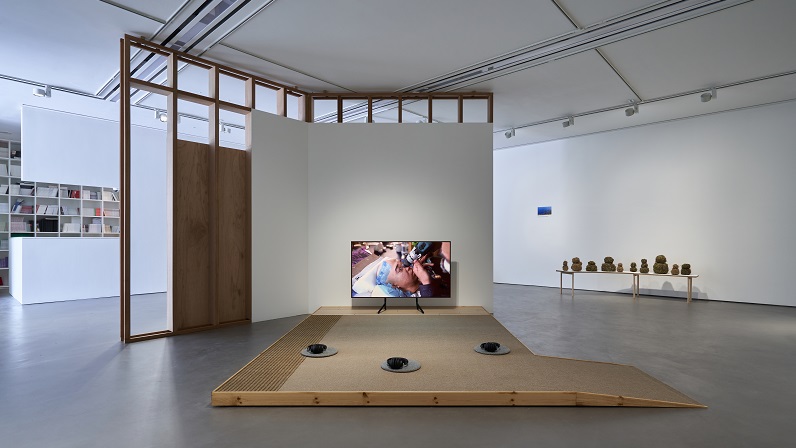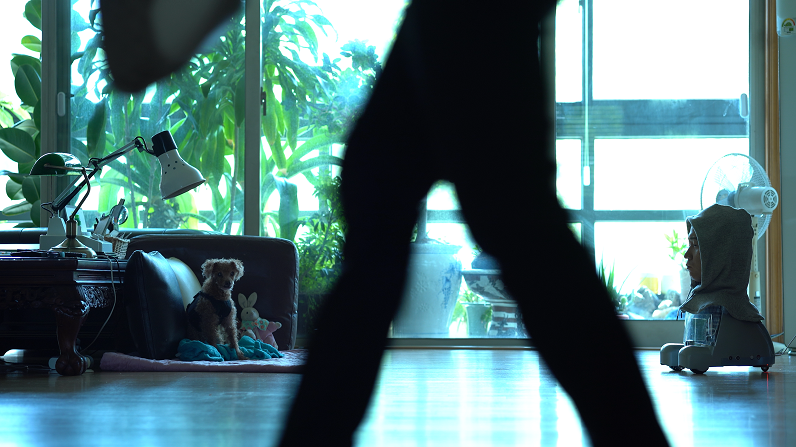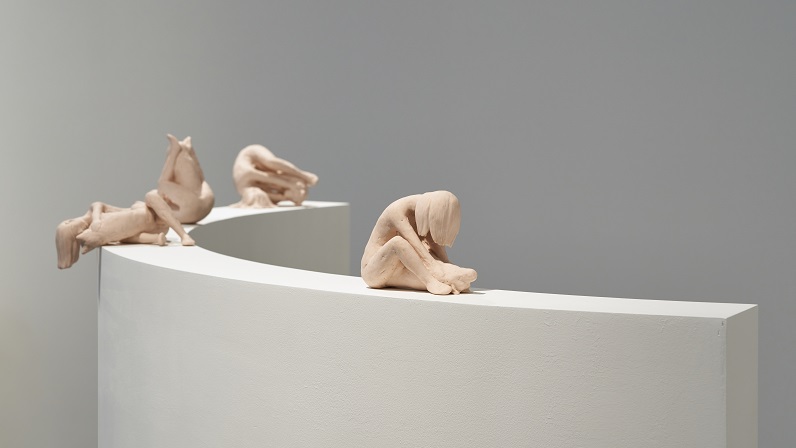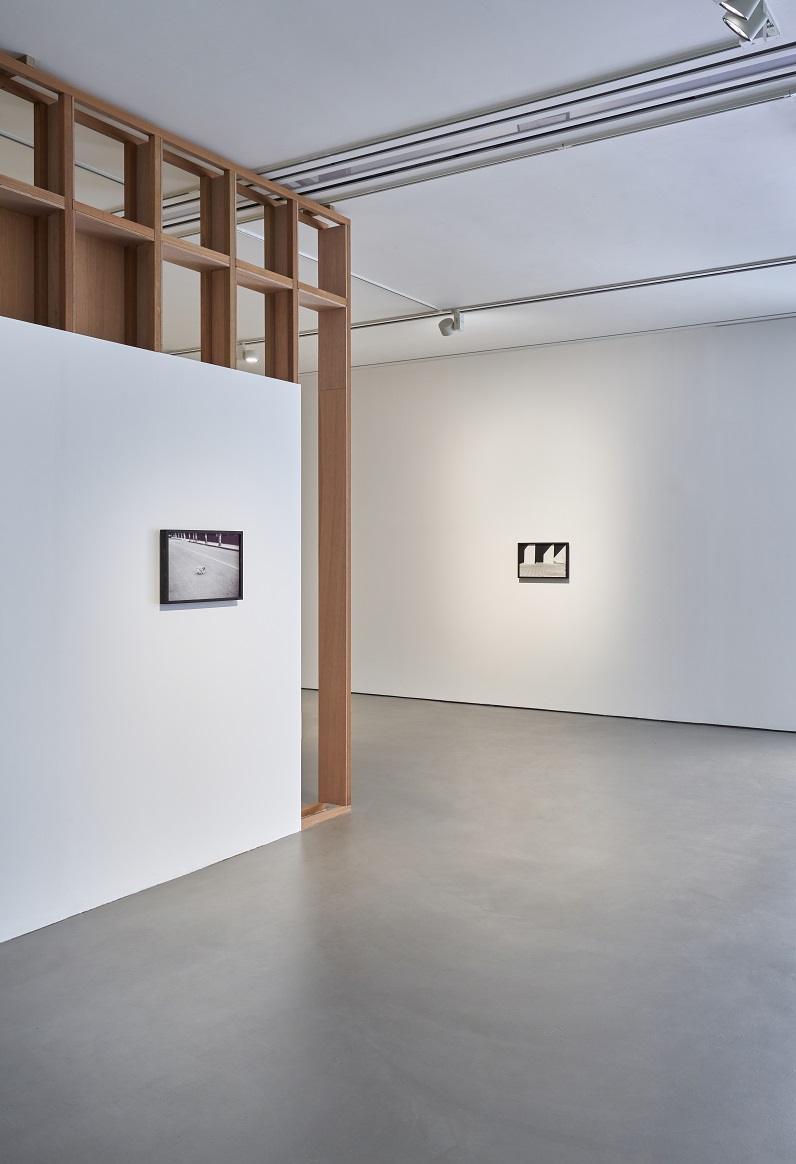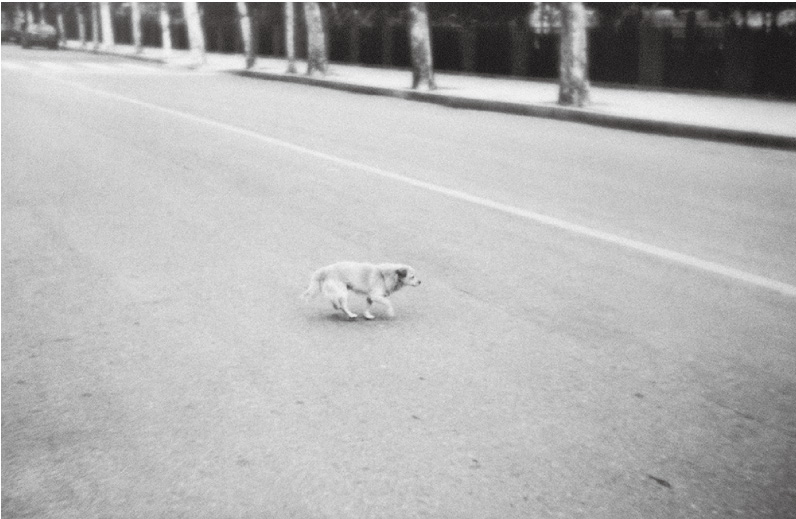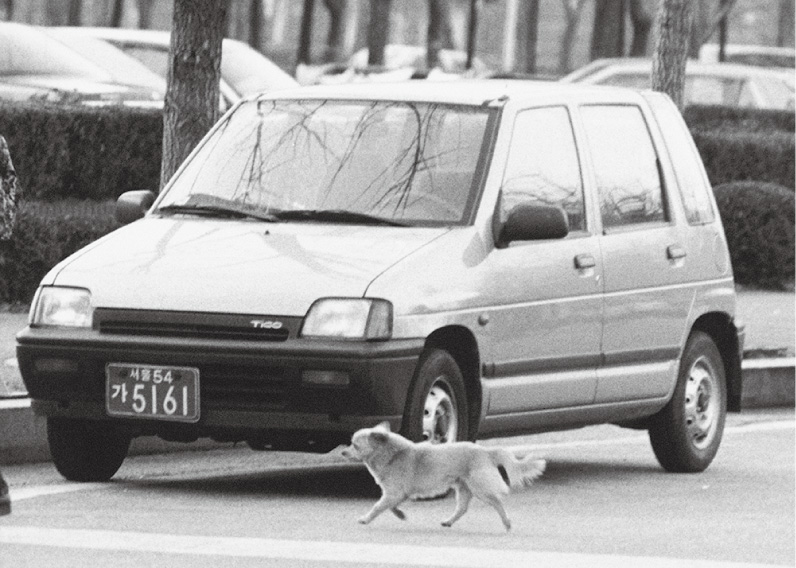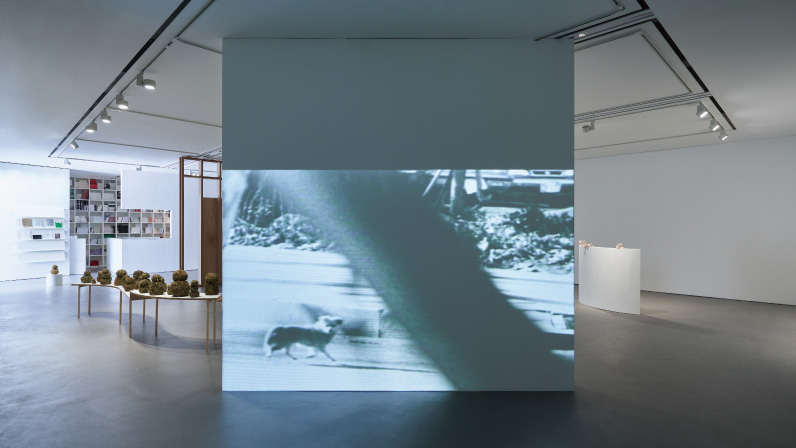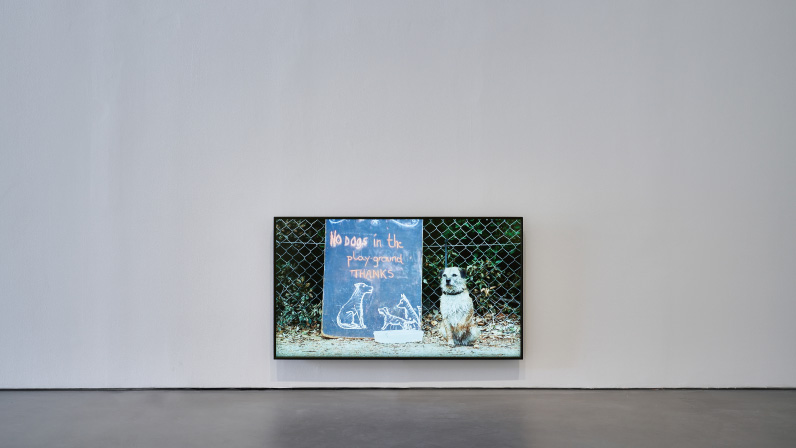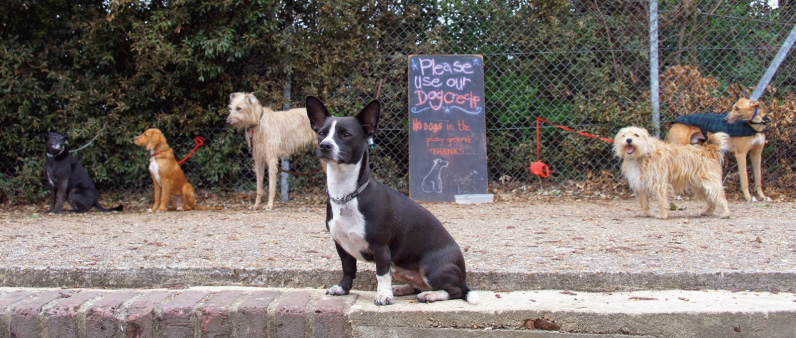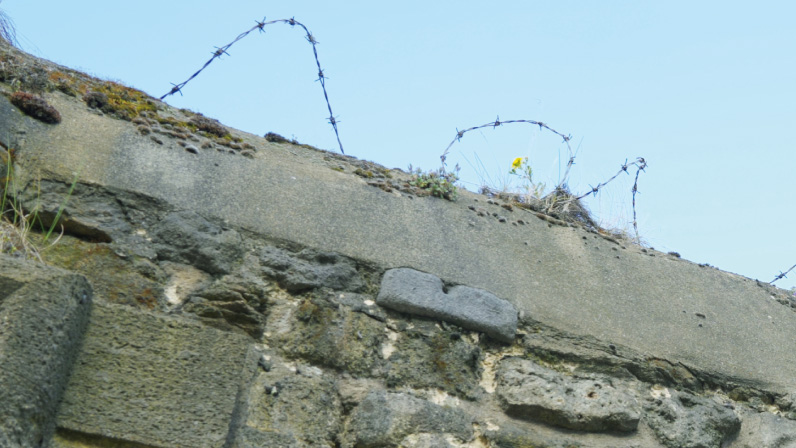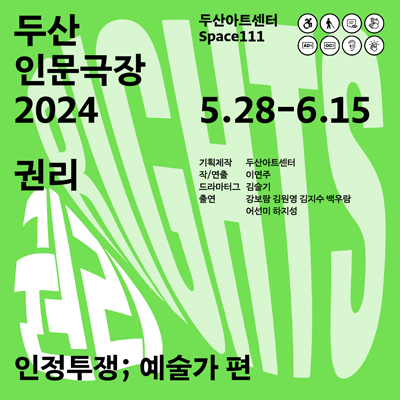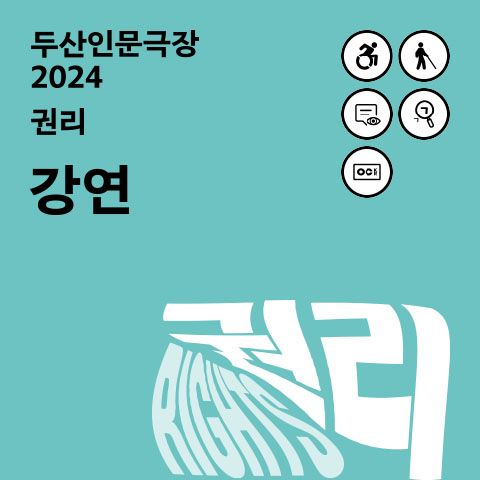
Installation view
Photo by Ian Yang
Tuesday-Saturday 11:00~19:00 / Closed on Sunday, Monday
DOOSAN Gallery: 15, Jongno 33-gil, Jongno-gu, Seoul, Korea
Tel. 02-708-5050
DOOSAN Art Center, DOOSAN Gallery presents the 2024 DOOSAN Humanities Theater Special Exhibition You Cannot Elaborate the Dark Thickness of Night As They Can from May 15 to June 22, 2024.
You Cannot Elaborate the Dark Thickness of Night As They Can focuses on the lives of the non-human plants and animals that share the Earth with human beings. As it shows the entangled nature of the human/non-human relationship, it proposes consideration of the “whole” rights of the beings who make up the planet. The exhibition title is taken from a line in the collection Dog Songs by the American poet Mary Oliver.* It is a message that praises the dog’s innate ability to distinguish various presences even in the darkness through their sight, smell, and sounds, and it also shows the divide that arises from interspecies differences between human and non-human beings. If human beings are faced with the inherent limitation of being unable to escape our humanity, the perspectives shown by the four artists as they observe the non-human presences around us and visualize our relationships with them offer a way of transcending that divide and living together.
The eight works in the exhibition show non-human beings who have established multiple layers through their presence on Earth over the ages. The most familiar and common presences shown in the works—namely dogs and weeds—are differentiated into various forms through the perspectives of the artists capturing them. They may appear blithely throughout the main provinces of human life, taking on the appearance of symbiotic partners or outlaws that threaten other species. At the same time, they exist within the cycles of nature as all life does: appearing into the world before eventually fading away. What the works in this exhibition illustrate is not merely the object that appears on the canvas, but the ways in which each individual lives its life and the forms of relationships established between human and non-human beings—and between each being and its environment—as they share the same temporal and spatial milieu. As we observe how the softness and moistness of plants and animals turns rough and dry over time, just as ours does, the portraits of weeds and dogs in the images become juxtaposed with ourselves as resonant forms of life. While the exhibition starts from the divide between human and non-human beings, it attempts to proceed from there to our commonalities as presences making up a diverse world.
The work of artist Gosari incorporates the relationships that human beings have formed with plants through the process of cultivating a village community and eco-friendly garden. She focuses on weeds as plants that are defined as “unsuitable” within human-centered ecosystems, as people eradicate them for the sake of their harvests. Her Grass man series (2021–24) includes pure forms of sculpture, as the artist hand-shapes removed weeds into something akin to a snowman made from the snow. Through the gallery, these figures recall the presence of the plants that are eliminated as human beings pursue their livelihoods. Earth star, weed (2024) is an assemblage created by gathering the different plants that grow in the Earth, which are variously categorized by us as “crops” and “weeds.” While collecting the weeds, Gosari verified each one’s name and use. Breaking free from binary divisions, she presents plants with differing characteristics to show the inherent diversity of life.
Ellie Kyungran Heo’s work I Say (2012) shows dogs waiting in front of an impassable boundary. The dogs share a forceful message in a non-human language. Heo’s videos show scenes of different beings coexisting in everyday moments, leading the viewer to ponder ways of coexistence and the influences that we have on each other. The Ragwort (2023) adopts a video and archive format to show the artist’s observations of a ragwort, a commonly found plant in the UK that is categorized as a weed. The video work highlights the place occupied by plants as they share space with humans, while the archive provides a look at the conflict surrounding ragwort and the fragmentary history of a plant that originated in Sicily and has existed with us beyond human memory. In the process, the work raises questions about our moral standards for determining “correctness” and “wrongness.”
The duo Gwon Dong Hyun × Kwon Sea Jung presents works of sculpture and video showing fragments of the everyday experiences of their dogs, as they comment on the entangled relationships that human and non-human beings form. In Drive me, Kiss me, Eat me, Dodo (2021–24), the artists link to a pet care robot named “Seddy” that they have purchased to look after their old dog Dodo; the device in question has the face of a family member familiar to the dog. The transformation into Seddy—which has a lower-lying perspective and cruder movements than Dodo—evokes feelings that are both familiar and strange, creating a fissure in the caring possible and the familiar relationship between pet and human being. Within the home, floors and beds are spaces where animals and people can spend time together; Woman with dog, dog with woman (2023–24), shows these moments of everyday entanglement between dog and human being. The sculptures are modeled on forms in photographs taken while caring for a sick dog at home. While conveying a feeling of familiarity, they also allude to a fluid relationship involving similar yet different movements, leaving an impression that is likely to linger.
Jaywalker (1998) by Park Hwa Young is a semi-ary video showing a stray dog. Sensing a kind of bond with a stray dog that she happened to encounter in her neighborhood, Park dubbed it “Jaywalker” after her impression of their first meeting, when she encountered the dog walking across a street. She captured her repeated encounters with the dog on film and recorded them in drawings. She then used a camcorder to capture photographs from over a year of activity, adding narration and sounds to transform them into a video work. The sounds that appear are like a secret code—the signals of two beings connecting in a situation where the language acquired in the human realm is no longer useful. Jaywalker views the dog not as an object of pity and compassion but as an independent being living in the city. It expresses the hope of going beyond the relationship of “dog” and “self” to achieve communication between two disconnected beings who employ different languages.
* Mary Oliver, Dog Songs, Korean trans. Min Seungnam (Seoul: Media Changbi, 2021), p. 80.
Gosari (b. 1982) is based between Seoul and Ulsan. She has held her solo exhibitions at spaces including Daechumoo Fine Art (2022, Gangneung, KR), CR-Collective (2022, Seoul, KR) and Salt Museum (2020, Jeung-do, KR). She has also participated in group exhibitions including Ulsan Art Museum (2023, Ulsan, KR), Daecheongho Museum of Art (2022, Cheongju, KR), Muse Sseum Gallery (2022, Ulsan, KR), Studio Next (2022, Kolkata, India) and Alternative Art Space Sonahmoo (2021, Anseong, KR).
Gwon Dong Hyun × Kwon Sea Jung formed in 2020, and are currently based in Seoul. They have held their solo exhibition at YPC SPACE (2023, Seoul, KR) and participated in group shows and screenings including 2nd Twinkle ary Film Festival (2024, Seoul, KR), Hapjungjigu (2023, Seoul, KR), 49th Seoul Independent Film Festival (2023, Seoul, KR), Frieze Film Seoul 2022(2022, Seoul, KR) and Hall 1 (2022, Seoul, KR).
Park Hwa Young (b. 1968) lives and works in Seoul. She has held her solo exhibitions at spaces including Seowang Gongwon (2024, Seoul, KR), Gong-won (2020, Seoul, KR) and Sehwa Museum of Art (2019, Seoul, KR). Also, she participated in group shows and screenings including MMCA (2023, Seoul, KR), Culture Tank T5 (2022, Seoul, KR), Asean Culture House (2022, Busan, KR), VIENNA INDEPENDENT FILM FESTIVAL (2020, Vienna, AT) and Insa Art Space (2019, Seoul, KR).
Ellie Kyungran Heo (b. 1976) is based in London. She has held her solo exhibitions and screenings at spaces including Jule Collins Smith Museum of Fine Art (2022, Alabama Auburn, US), Spitsbergen Artists Center (2022, Svalbard, NO), and LUX (2021, London, UK). Also, she has participated in group shows and screenings including Asia Culture Center (2023, Gwangju, KR), Travelling Gallery (2023, Edinburgh, UK), Stichting WORM (2023, Rotterdam, NL), Festival ECRÃ (2023, Rio de Janeiro, BR) and KELDER (2022, London, UK).
Curated by Soun Park │ Assisted by Seongeun Park


